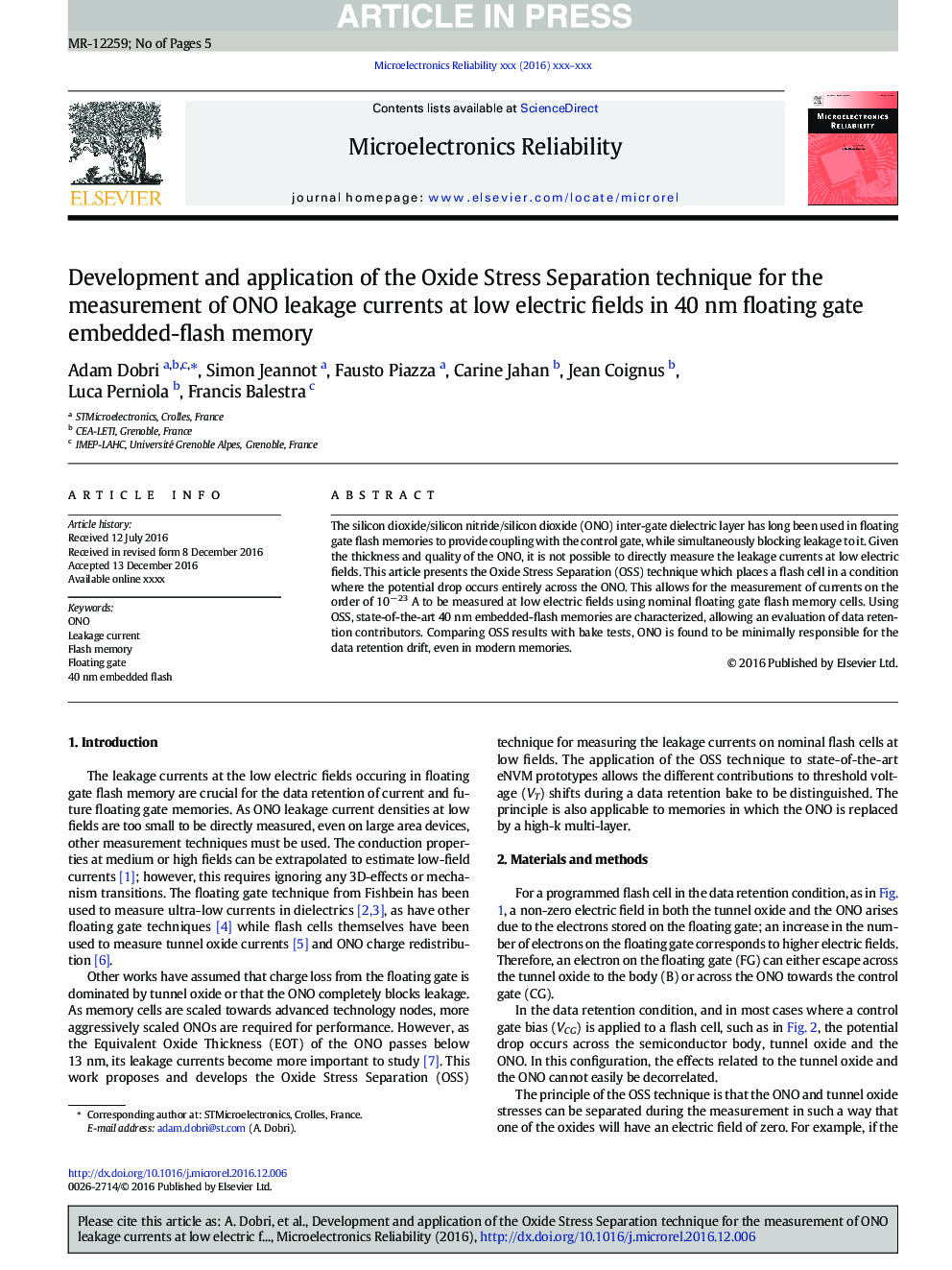| Article ID | Journal | Published Year | Pages | File Type |
|---|---|---|---|---|
| 4971686 | Microelectronics Reliability | 2017 | 5 Pages |
Abstract
The silicon dioxide/silicon nitride/silicon dioxide (ONO) inter-gate dielectric layer has long been used in floating gate flash memories to provide coupling with the control gate, while simultaneously blocking leakage to it. Given the thickness and quality of the ONO, it is not possible to directly measure the leakage currents at low electric fields. This article presents the Oxide Stress Separation (OSS) technique which places a flash cell in a condition where the potential drop occurs entirely across the ONO. This allows for the measurement of currents on the order of 10â 23 A to be measured at low electric fields using nominal floating gate flash memory cells. Using OSS, state-of-the-art 40 nm embedded-flash memories are characterized, allowing an evaluation of data retention contributors. Comparing OSS results with bake tests, ONO is found to be minimally responsible for the data retention drift, even in modern memories.
Related Topics
Physical Sciences and Engineering
Computer Science
Hardware and Architecture
Authors
Adam Dobri, Simon Jeannot, Fausto Piazza, Carine Jahan, Jean Coignus, Luca Perniola, Francis Balestra,
